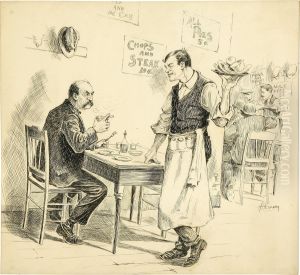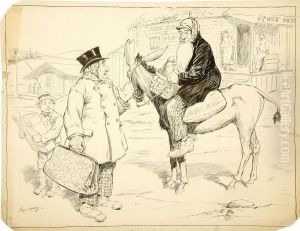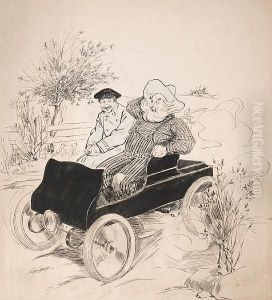Walter Caspari Paintings
Walter Caspari was a German artist and illustrator, born on January 28, 1877, in Munich, Germany. He was active during the late 19th and early 20th centuries, a period marked by significant changes in the arts, including the rise of modernism. Caspari is particularly known for his work as an illustrator of children's books and animal studies.
Caspari received his artistic training at the Munich Academy of Fine Arts, where he studied under notable artists such as Wilhelm von Diez and Ludwig von Löfftz. This education grounded him in the academic traditions of painting, but over time, he began to develop his own distinctive style, which combined a keen observation of nature with a gentle, narrative charm.
Throughout his career, Caspari illustrated numerous books, particularly for young audiences. He had a special talent for capturing the character and movement of animals, making them appealing and relatable to children. His work in this field contributed to the popularization of children's literature in Germany and helped to define the visual language of children's book illustration of his time.
In addition to his illustration work, Caspari also produced fine art paintings and was involved in the artistic life of Munich. However, he is best remembered for his contributions to illustration. His ability to convey warmth, humor, and a sense of whimsy made his illustrations beloved by both children and adults. The outbreak of World War I and the subsequent political and economic turmoil in Germany did affect his career, but he continued to work and maintain relevance as an artist.
Caspari's legacy is somewhat overshadowed by the more avant-garde artists of his era, but his work remains a testament to the storytelling power of illustration and its importance in the cultural life of Germany and beyond during the early 20th century. Walter Caspari passed away on February 15, 1949, in Herrsching, Germany. Today, his illustrations continue to be appreciated for their charm, technical skill, and historical value.


